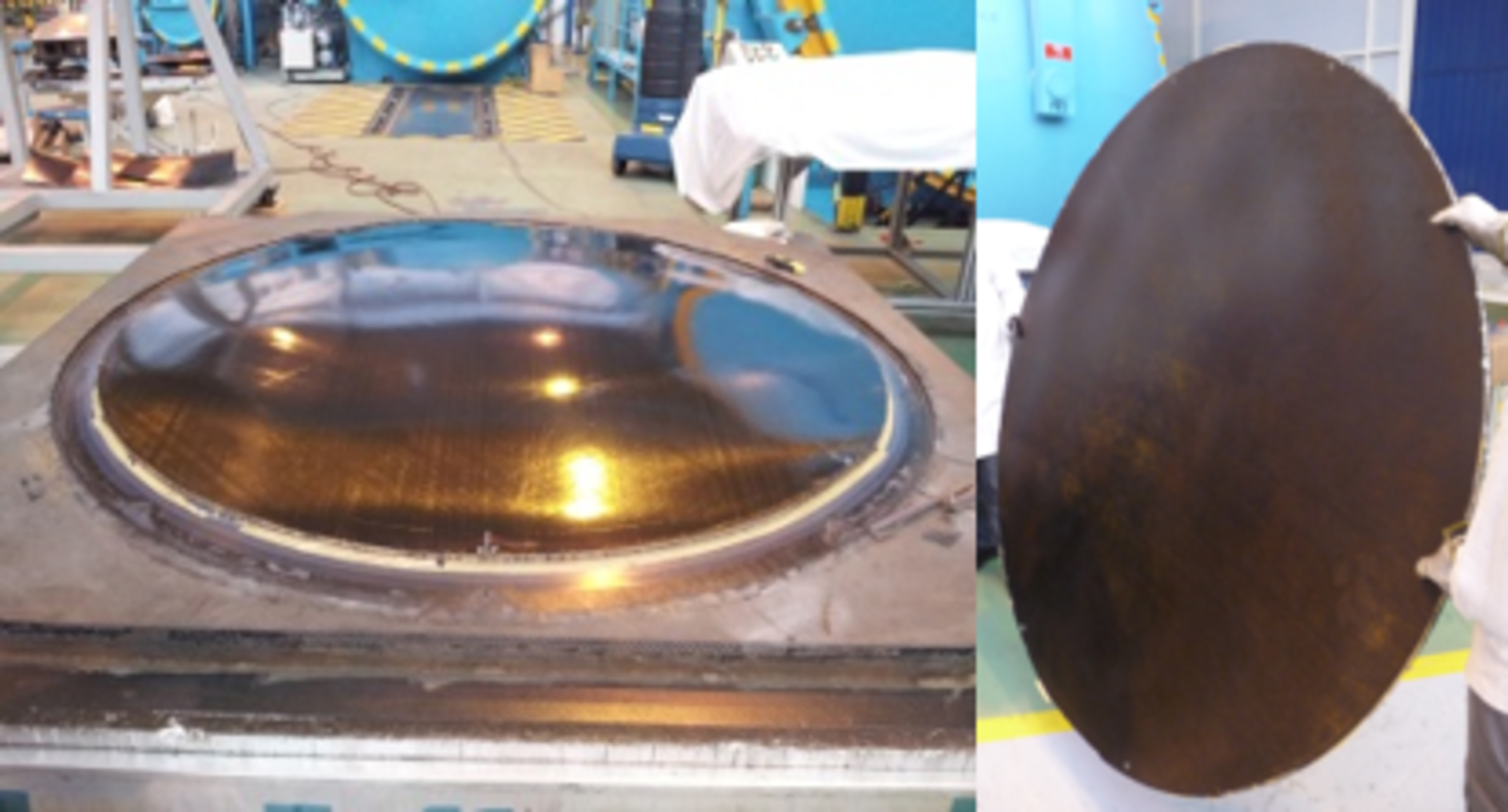
with protected aluminum or gold coating), which often exhibit too high reflection losses for use as laser mirrors, others are made with dielectric coatings. While some parabolic mirrors are broadband metal-coated first surface mirrors (e.g. One can then also check the possibly significant effect of the polarization of the light.
#Aluminum parabolic reflector full#
One should then use a full vector code, not representing light fields as scalar fields, but as full vector fields. Calculating the Performance of Parabolic MirrorsĪs parabolic mirrors are often used in conjunction with highly divergent (or convergent) beams, their performance can often not be accurately calculated with simplified numerical computation methods, e.g.

Click on the preview image to load the simulation. Figure 3: Simulation widget from 3DOptix, demonstrating focusing with an off-axis parabolic mirror. If the input beam deviates from that direction, there will be distortions in the form of comatic aberrations. It may be helpful to have a shape of the mirror substrate and/or the mirror holder which clearly identifies the direction of the optical axis – for example, with a flat base which is perpendicular to the required beam direction. Aligning an off-axis parabolic mirror may be relatively difficult!ĭue to the mentioned asymmetry, it is obviously important but more challenging to properly align an off-axis reflector to the incoming beam – particularly in cases where it is difficult to measure the precise intensity profile in the focus. It is thus also very important to be sure whether the specified angle of operation is the angle of incidence (for the beam center) or rather the angle between input and output beam, which is twice that angle of incidence. The remaining shape is obviously not one which is parabolic around its center it is more strongly curved around the bottom.Īn off-axis mirror is made for a certain angle of incidence of the central portion of the beam, and will work well only for angles close to that value. Here, one may of course omit the right part of the mirror, i.e., make a smaller off-axis reflector from a larger parent mirror. This is illustrated in Figure 2, where the input rays have been restricted to the left side. Therefore, one sometimes requires parabolic off-axis mirrors, where the focus point lies outside the incoming beam. Off-axis Reflectors Figure 2: Focusing with an off-axis parabolic mirror.įor a centered parabolic mirror as shown in Figure 1, the focus is located on the axis of the incoming beam, which is not practical for many applications: one could not access the focus without disrupting the incoming beam. With them, one can achieve substantial improvements of optical performance in the context of beams with high numerical aperture, i.e., involving extreme angles and high beam divergence. Similarly, parabolic reflectors are best suited for collimating tightly focused beams.

(Their radius of curvature gets longer outside the center.) They are also achromatic (like most other mirrors) because in contrast to lenses their operation principle does not involve refraction.Īlthough ray optics, neglecting the wave nature of light, cannot fully describe light propagation, it correctly suggests that parabolic mirrors are best suited for precisely focusing collimated beams – not only within the paraxial approximation (considering only beams close to the center). Parabolic mirrors can be considered as aspheric optics, i.e., optics with a non-spherical shape. This would not work for a mirror with spherical shape, which would exhibit so-called spherical aberrations.

Figure 1: A parabolic mirror reflects incoming parallel rays into a focal point.Ī special property of the parabolic shape is that incoming parallel rays are all reflected into the same focal point, as is shown in Figure 1. Typically, the three-dimensional form is that of a paraboloid (i.e., rotationally symmetric), but there are also parabolic mirrors which are curved in only one direction and therefore focus light only in that direction (similar to cylindrical lenses). Parabolic mirrors (or parabolic reflectors) are mirrors where a cross-section through the optical surface has the shape of a parabola.
#Aluminum parabolic reflector how to#
How to cite the article suggest additional literature Definition: mirrors with the surface shape of a paraboloid, or at least a parabolic cross-section


 0 kommentar(er)
0 kommentar(er)
